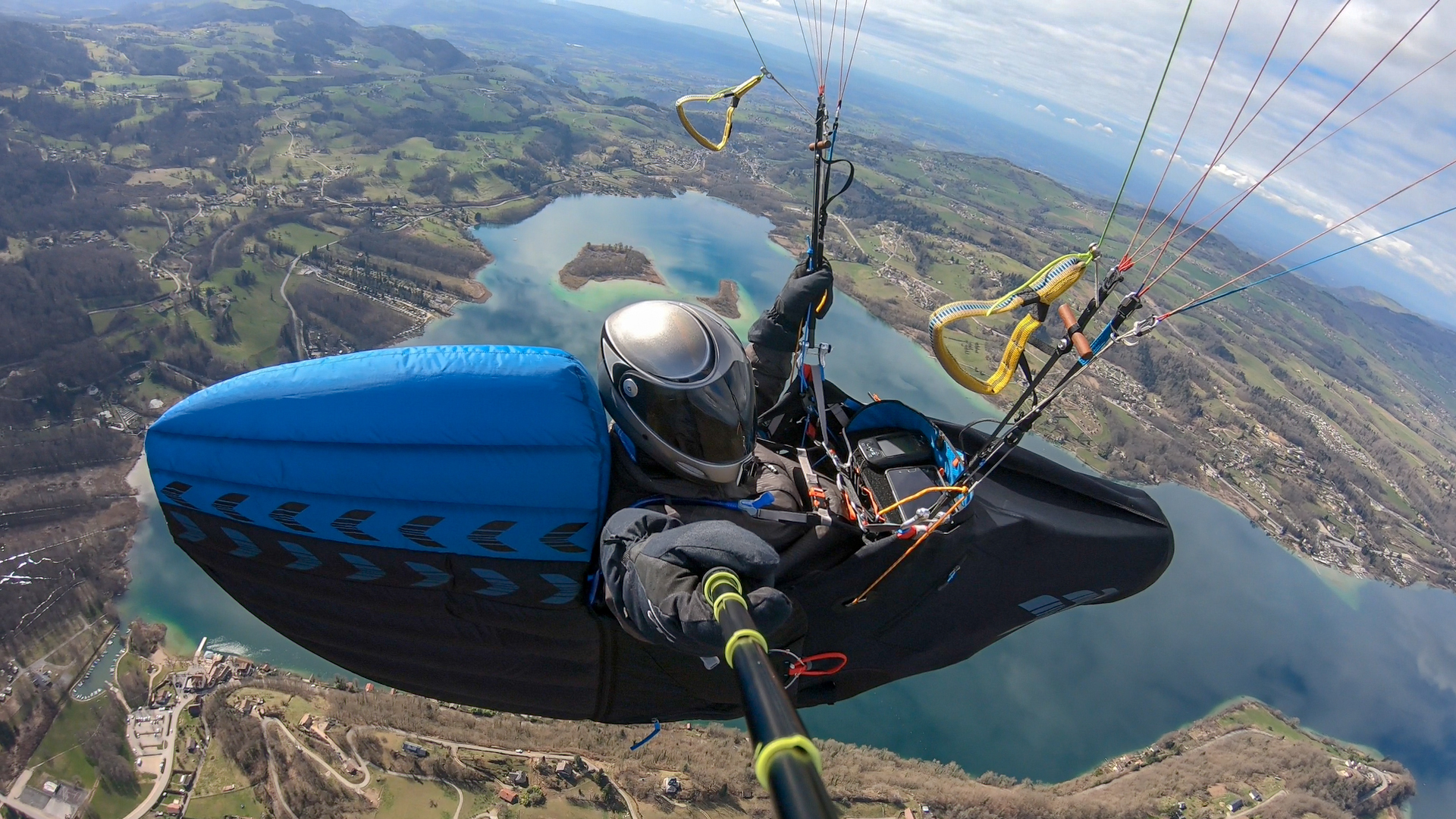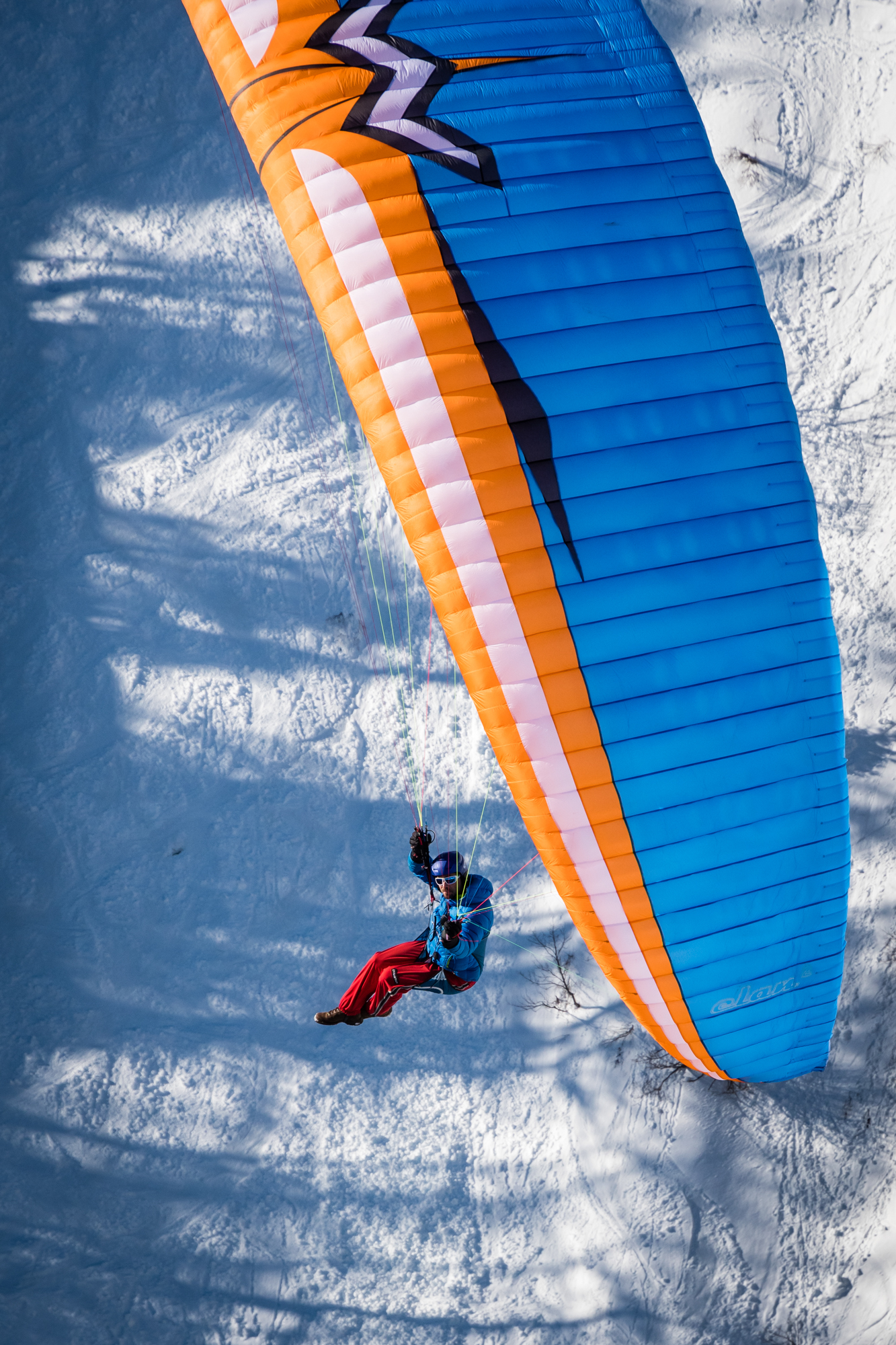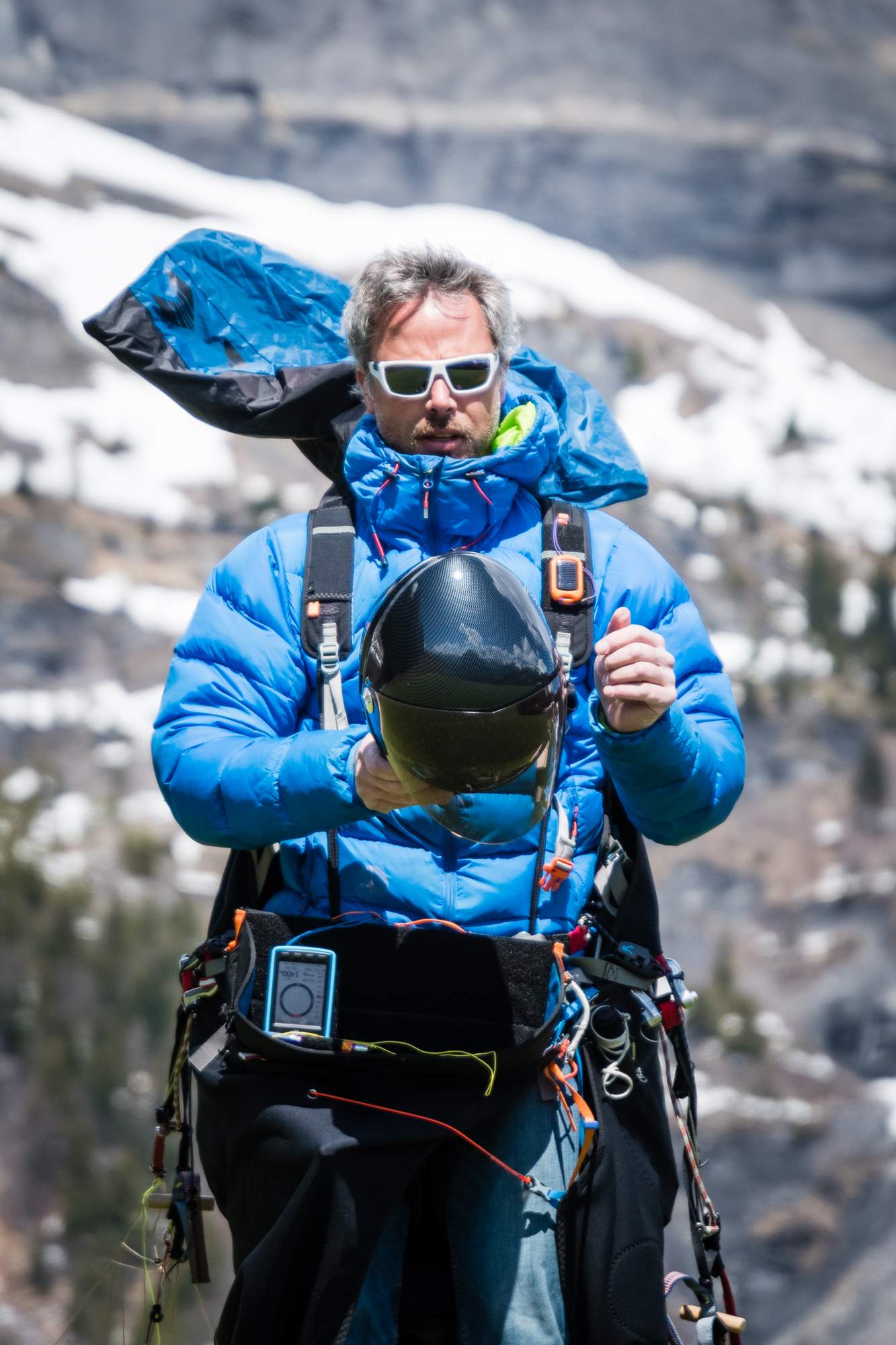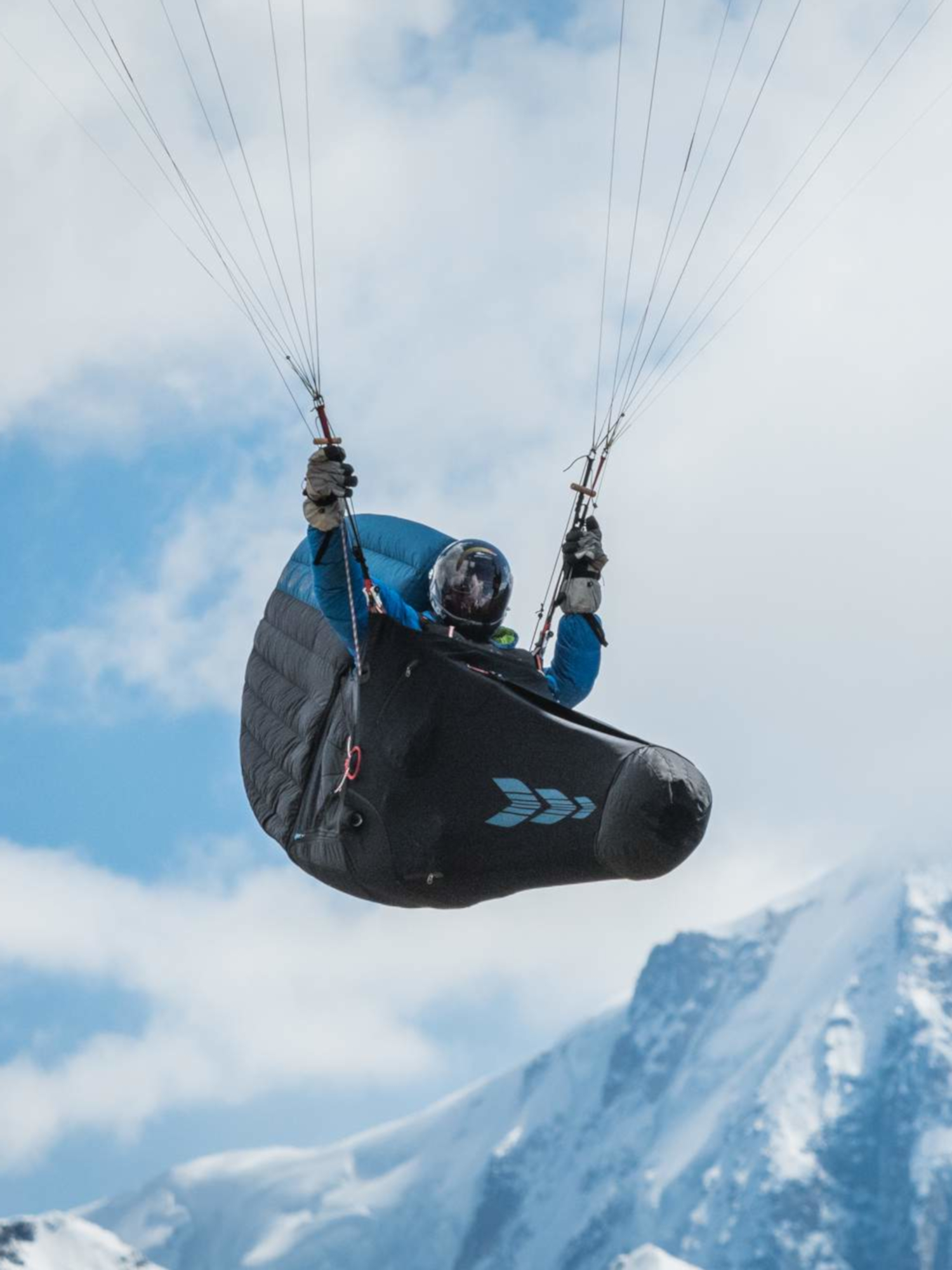
What's a good harness?
SELLETTE
(Cf Wikipedia)
"In paragliding, the harness is the seat in which the pilot sits. It is connected to the risers by two carabiners. The pilot is attached to it by straps.
As the glider flies in an active air mass, it transmits information to the pilot via the harness. The pilot then reacts to this information by acting on the wing directly with the brakes, but also with his whole body in contact with the harness. The harness therefore puts the pilot in tune with the wing.
The best glider in the world will only perform well if the 2 other elements of the triplet are well adjusted.

The one that best suits you and your sail!
NOTE:
We won't talk here about the different options (storage, protection, volume, etc...) which will obviously have to be taken into account in your final choice, but which are not to be considered in the adequacy with the sail and the pilot.
The first thing to consider is your glider and the type of flights you are planning. You must therefore be familiar with your glider and its performance.
A cross-country/competition pilot will not have the same expectations as a young pilot who is discovering thermalling on a known site, or as an amateur bivouac pilot.
Don't take a hike-and-fly harness to go flying for a competition and vice-versa!
A dynamic wing may need a relatively stable harness to dampen the various movements of the wing. On the other hand, a more unstable harness will help to shake up a mellow wing.
A high performance and demanding glider should flown efficiently in all conditions, allowing the pilot to use its full potential, with a wide range of trimming possibilities and features. A harness with a bottomtray is often more precise than a harness with independent thighs. A harness with good rigidity limits parasitic movements transmitted to the glider and optimizes every phase of flight.
On the other hand, a beginner will prefer a "simpler" harness that allows him to pilot his wing with peace of mind without having to worry unnecessarily about his harness. The role of the harness will also be to filter out excess information provided by the glider. The harness should nevertheless allow the pilot to fly the wing actively.
A mini glider is usually flown with a leg harness, which allows you to filter out a little bit the many movements of this rather lively type of glider. With a bottom tray (which transmits faster), you risk being constantly out of phase in your piloting.

The second point is actually the pilot. Everyone is different: man, woman, tall, short, skinny, large, ...
And not everyone has the same level or the same flying goals...
We can distinguish 3 overall families of pilots/practices:
- The beginner, who mostly does short flights on site.
The beginner needs an open field of view forward and downward to easily find the visual clues, as well as a high roll inertia geometry that will automatically filter out the movements of the harness. He will therefore choose a seated position harness.
- The performance pilot, who practices cross-country and/or competition.
The information he seeks to optimize flight conditions are mostly in the sky (wing movements, clouds, wind, birds, ...) and his position naturally becomes more reclined. In addition, he needs a geometry with less roll inertia which allows him to have a harness that transmits more information. Flights can last several hours, and comfort becomes essential to stay in good shape and concentrated throughout. The recumbent harness with cocoon is therefore the most suitable harness for this type of pilot.
- The intermediate pilot, who flies in thermals on site and builds longer and longer flights.
This pilot is is in between the previous 2 examples. This pilot is in the learning phase where his information needs (visual and sensitive) are evolving. He will therefore have to change his position and the geometry of his harness to accompany him during his progression. He will be able to go through a semi-recumbent position, and by adding a foot restraint before eventually moving on to a cocoon harness.

Last element, resulting from the 2 others: The harness.
Each pilot has his own shape and specific traits. In the air, some like to lie down, others can't stand it. Some can remain relaxed in any conditions, others cower as soon as the air mass starts to activate.
A passage through the gantry helps to understand the various settings, and to make a first compromise on them. But once in the air, things can be different: behaviour of the wing, state of mind, flight site, etc .... The posture in the harness can therefore be modified, and then you have to go through the "adjustment" box again to refine all this.
Note: It is advisable, during this phase of tests and adjustments, to memorize the elements that you like (or not!) in order to be able to search for them (or not!) during future tests. If you know that you prefer a rather stable harness (height of the anchor point / type of damping present, geometry), then there is no point in testing a harness that is known to be unstable.
Since the notion of comfort is mostly subjective, it is not possible to say that this or that harness is more or less comfortable. Especially since the notion of comfort (or rather discomfort) may only appear after a certain duration of flight time. A test on a gantry never lasts more than a few minutes, and it is therefore difficult to detect potential problems.
A painful or uncomfortable harness can become a real safety problem in the air, if the pilot can no longer be 100% in control.
It is therefore essential to try a harness in the air, in real flying conditions.
At this point you will have tested several harnesses that may be suitable for your glider and your practice, and in which you feel comfortable even after a long flight.
The most important thing is done!
Now what remains is to compare some additional parameters:
- Protection, with or without? Foam bag or airbag ?
- Rescue container? How many? Locations?
- Storage? Number of pockets ? Locations ?
- Accessories? Foot strap ? Cocoon ?
- ...

Be careful not to neglect the "glider" and "pilot" points: It is preferable to have a comfortable harness adapted to your glider, even if it lacks a pocket ...
A harness is a long-term investment, you change it less often than a wing.
PILOTS' OPINIONS ...
A good harness is also something simple to adjust, intuitive, and has the ability to put us in confidence in any type of flight, situation or practice (acro, cross, hike and fly ......)
Second of all, a choice which is oriented towards comfort. Because being comfortable in a harness is what allows you to use the maximum capacity of your wing.
If, despite these points, there is a question of differentiation, then the focus should be on the brand, because depending on the reputation, there can be big differences, particularly in terms of the durability of the harness, the type of materials used, and the quality of after-sales service, which is an important point.
For cross country and competition (with an high aspect ratio wing) comfort and profile, stability for transitions with the possibility of instability in thermals and not too heavy for air travel and for carrying the bag after an un-planned landing ...
For hiking & flying (associated with a light and performance glider), the first quality will be lightness but without obscuring comfort, profile and stability. For trekking flight (associated with an ultralight wing), the lightest possible harness, with enough comfort to fly for 1h ...
